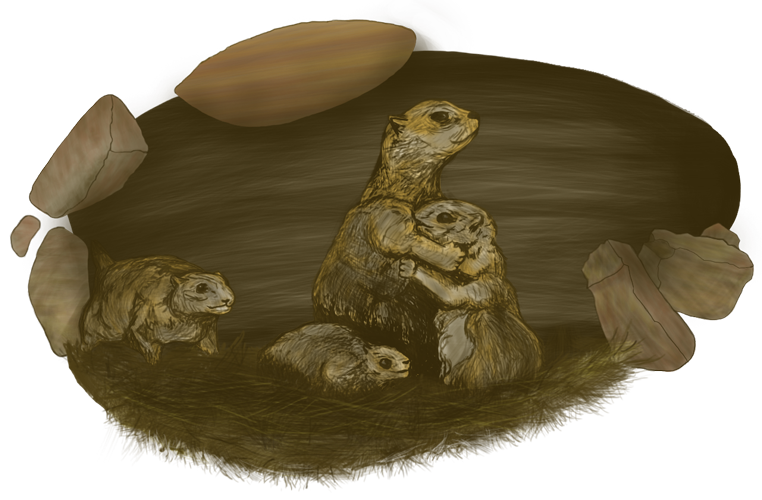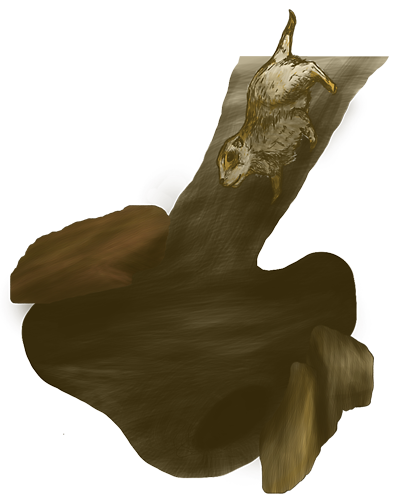Preservation
Conservation Study Forum

Conservation Study Forum 2019 Update
The Conservation Study Forum started to come together in 1998, a group of local scientists and knowledgeable citizens acting as individuals responded to the call for public input on resources for the 1998 Flagstaff Area Open Spaces & Greenways Plan, the 2001 Flagstaff Area Regional Land Use and Transportation Plan and the 2003 Coconino County Comprehensive Plan. This group came to be known as the Expert Forum with most of our members having acquired expertise in resource management through their employment and have a number of years of work in the area to their credit. Other members, who have joined over the years, offer knowledge gained through public service on boards and involvement in planning and management. Pooling their expertise, they volunteered to identify and map areas of natural, historic, and cultural significance. Following review by city staff and further public comment, planning staff incorporated much of the Forum’s information into the original Flagstaff Area Regional Plan process.
After the Flagstaff Area Regional Plan 2030 was approved by the voters in 2014, The Conservation Study Forum and Habitat Harmony worked together for three years to draft amendments to the Zoning Ordinance that would implement Resource Protection goals in the Regional Plan. The City of Flagstaff planning and zoning staff was a significant help. Background on this effort is explained in a fall 2017 letter to the mayor and council:
On November 21, 2017, the Conservation Study Forum and Habitat Harmony presented a Citizen’s Petition to the city council to put Amendments to the Resource Protection section of the Zoning Ordinance on their agenda as soon as possible. All members of the council agreed. Please have a look at the petition below to see the work done to procure this future spot on the agenda:
Due to loss of staff in the zoning and planning departments at the City of Flagstaff and time required to find new staff, the Resource Protection Amendments to the Zoning Ordinance are scheduled to be on council’s agenda in the fall of 2019 and winter of 2020. Here are the Amendments as submitted by the Conservation Study Forum and Habitat Harmony. We will work with zoning staff during the process of incorporating them into the Zoning Ordinance. Below are each amendment and our recommendations:
Interagency Management Plan for Gunnison’s Prairie Dogs in Arizona

- Identifies minimum number of active acres to be maintained in Arizona (108,353 acres)
- Requires maintaining prairie dog populations across 75% of their historic range
- Directs monitoring incidence of plague and threats to habitat
- Requires development of mitigation program for urban prairie dogs
In 2004, the U.S. Fish and Wildlife Service was petitioned to list the Gunnison’s prairie dog for protection under the Endangered Species Act. As a result of this petition, the Western Association of Fish and Wildlife Agencies created the Gunnison’s Prairie Dog Conservation Assessment (Seglund et al. 2006) to assess the conservation concerns of the species. The Conservation Assessment led to the White-tailed Prairie Dog and Gunnison’s Prairie Dog Conservation Strategy (WAWFA 2006) a guide for each state within the range of these species to write its own state prairie dog management plan for conservation. In Arizona, the Arizona Game and Fish Department created a Gunnison’s Prairie Dog Working Group to assist with the drafting of its state plan. Habitat Harmony, Inc. is pleased to have been an active member of the Gunnison’s Prairie Dog Working Group since its inception in 2006. The final draft of the Interagency Management Plan for Gunnison’s Prairie Dogs in Arizona (Underwood, 2007) was finished in December 2007, and will serve as a comprehensive conservation guide for Gunnison’s prairie dogs in Arizona.
Expert Forum for Wildlife and Open Spaces

- Flagstaff scientists advocating for preservation
- Commenting goals, policies and strategies in the revised Regional Plan
- Contributing to an on-line Resource Inventory for the Flagstaff Area
- Creating a map for a Conservation Lands System for the Flagstaff area and advocating for its implementation
- Funding a map of vegetation, wildlife corridors and habitat hotspots
- Supported purchase of Hoffman Tank with Open Space bond money
- Commenting on the Regional Transportation Plan
The mission of Habitat Harmony’s Expert Forum for Wildlife and Open Space (formerly known as the Study Group for Wildlife and Open Spaces) is to contribute scientific expertise to the planning process for preservation of wildlife and open spaces in the greater Flagstaff area.
Saving The Prairie is Saving Ourselves
 Statistics speak for themselves: prairie dog habitat of the great western plains has been reduced to approximately one percent of its historical range. Prairie dogs once dominated the short and mixed grass prairies of the Great Plains, occupying as much as 100-250 million acres. Today, they occupy a mere fraction of that, and are struggling to survive. In 1900,it is estimated that there were only 20 wild buffalo roaming the American plains where once there were over 60 million. Gone forever are the plains wolf, plains grizzly, Audubon's bighorn sheep and the Eskimo curlew. Many consider that the Great Plains are more endangered than the rain forests of central America. To survive, the Great Plains need prairie dogs.
Statistics speak for themselves: prairie dog habitat of the great western plains has been reduced to approximately one percent of its historical range. Prairie dogs once dominated the short and mixed grass prairies of the Great Plains, occupying as much as 100-250 million acres. Today, they occupy a mere fraction of that, and are struggling to survive. In 1900,it is estimated that there were only 20 wild buffalo roaming the American plains where once there were over 60 million. Gone forever are the plains wolf, plains grizzly, Audubon's bighorn sheep and the Eskimo curlew. Many consider that the Great Plains are more endangered than the rain forests of central America. To survive, the Great Plains need prairie dogs.
The nationwide demise of prairie dogs, the keepers of the prairie, is well documented. The factors that have contributed to this demise are habitat loss, habitat fragmentation, systematic poisoning, sylvatic plague, and recreational shooting. Of the five species of prairie dogs, the Mexican prairie dog is listed as endangered under the Endangered Species Act; the Utah prairie dog is listed as a threatened species; the black-tailed prairie dog is a candidate for listing as a threatened species; and Gunnison's prairie dogs are listed as warranted for listing in a portion of their habitat.
While it may appear at first glance that prairie dogs are abundant in northern Arizona, the local population is a fraction of the historical population. The colonies that have survived are largely isolated and threatened by development and plague. Isolated colonies do not have the genetic diversity necessary for longterm survival.
In the year 2001 alone, about 85% of the prairie dogs remaining in northern Arizona were lost to the outbreak of plague and destruction of habitat. (Arizona Daily Sun - Outdoors: "Prairie Dogs Need Help Fast," July 13, 2001. Wagner, David M.: "Current Status and Habitat Use of Gunnison's Prairie Dogs in Arizona," Northern Arizona University Doctoral Dissertation, May 2002.)
The widespread decrease in prairie dogs has far reaching consequences. Prairie dogs are known as a "keystone" species because they support over one hundred seventy other associated species. (Arizona Wildlife Views, "Watchable Wildlife: Prairie Dogs and Short-grass Prairie Ecosystems," Arizona Game and Fish Department, May 1998.) Endangered black-footed ferrets are dependent upon the prairie dog as the source of 90% of their diet. Pronghorn, coyotes, badgers, bison, burrowing owls, mountain plovers, ferruginous hawks, red-tailed hawks, golden eagles, swift foxes, horned larks, rabbits, deer mice, grasshopper mice and many other species benefit from the presence of prairie dogs. ("Conserving Prairie Dog Ecosystems on the Northern Plains, " The Predator Project; and Vanpelt, William E.: "A Tale of Two Dogs," Arizona Wildlife Views, Arizona Game and Fish Department, November-December 2000.)
Native vegetation is enhanced by the presence of prairie dogs. Because prairie dogs clip the vegetation around their burrows, more nitrogen is absorbed by the plants. Additionally, diversity of plants may be increased due to the digging that disturbs the soil in prairie dog colonies. (Aschwanden, Christie: "Learning to Live with Prairie Dogs," National Wildlife, April-May 2001. Hygnstrom, Scott E. and Virchow, Dallas R.: "Prairie Dogs and the Prairie Ecosystem," University of Nebraska, 2002.)
The availability of groundwater is beneficially affected by the presence of healthy prairie dog colonies. In 1996, an environmental engineer documented the process whereby a healthy prairie dog colony facilitates the absorption and percolation of groundwater, feeding a region's streams and rivers. (Outwater, Alice: Water: A Natural History, 1996, Perseus Books Group.) The Navajo have ancient myths connecting the prairie dog with ample water, which scientific experimentation has now substantiated. (Toelken, Barre: "Prairie Dogs Cry for Rain.") It seems that the prairie ecosystem works as a whole, with myriad relationships operating in an intricate balance. "Ecosystems are not only more complex than we think, but more complex than we can think." Understanding this observation of Frank Egle should caution us against species eradication.
Destroying the prairie dogs that keep the prairie has eliminated many species of animals and pushed others to the brink of extermination. Destroying prairie dogs has damaged the diversity and health of prairie plants. Destroying prairie dogs has harmed the availability of groundwater. We are losing the opportunity for recreational wildlife observation, and the opportunity to see a living, unique ecosystem. We are losing the opportunity to learn from the intricate connections of the species who make their homes on the prairie. We are harming beauty and balance when we harm the prairie. We trample the human spirit when we trample the spirit of creatures who share our earth. To save the prairie is to save ourselves.
A Message to Humans

"I used to be a city fellow. I grew up with the city noises of cars and trains and machines and humans. My family lived close to downtown Flagstaff not far from the railroad tracks along Route 66. What a busy, frightening place it was."
Read My Letter to You












